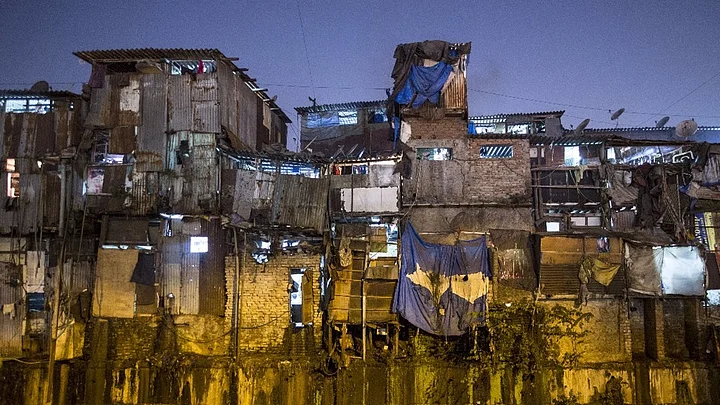The top five states by number of slums per 100 households – Chhattisgarh (18), Odisha (17), Jharkhand (14), Tamil Nadu (11) and Bihar (10) – in 2008-09, the latest year for which household data are available, had 51 percent of India’s slums, according to a new paper.
The top five by number of slums per 100 households are the only states/union territories with more than 10 percent of their population living in slums, said the September 2017 paper by HS Chopra, project director in Rajasthan’s rural development department.
In 2008-09, Tamil Nadu had the highest share of India’s slums at 931,169 or 30 percent, the only state/union territory with a share in double digits.
Households that lacked a concrete roof, drinking water, a latrine and closed drainage –the criteria laid down by an August 2010 report of the slum census committee – in the 2008-09 survey data of the National Sample Survey Office, India’s official socio-economic surveyor, were counted as slums.
A slum is defined as “a compact settlement of at least 20 households with slum-like conditions as given in the above criteria”, according to the paper.
The only communities with more than 10 percent of their population living in slums were scheduled castes and scheduled tribes, deprived communities identified in India’s constitution for government support.
In urban India, 60 percent slums are on government land, with 40 percent owned by urban local bodies, according to the draft National Urban Rental Housing Policy 2015.
The share of slums with a health centre and a primary school within 1 km fell 16 and 3 percentage points, respectively, to 47 percent and 87 percent in 2009 from 63 percent and 90 percent in 1993, according to the housing and urban poverty alleviation ministry’s 2015 statistical compendium on slums.
In Mumbai – home to the world’s third largest slum by population, Dharavi – 90 percent of deaths result from respiratory diseases, according to a survey by International Institute of Population Sciences, Mumbai, the Indian Express reported on 7 August 2015. Apart from Dharavi, slums in Mumbai’s suburbs too were growing to become at least as big as Dharavi, the Times Of India reported on 6 July 2011. Despite having India’s largest slums, only 3.7 percent of Maharashtra’s 9.8 million households were in slums, and only one in 100 households in the state was in a slum in 2008-09.
Slum dwellers often sell homes that the government relocates them to because these end up being far from their workplaces, according to Saudamini Das at Delhi University’s Institute Of Economic Growth, City Labs reported on 9 June 2017.
IndiaSpend Solutions
- Develop housing on slum land: draft National Urban Rental Housing Policy 2015
- Govt provide streetlight and sewage facility to slum households: “Do neighbourhood facilities matter for slum housing? Evidence from Indian slum clusters”, March 15, 2016, by Saudamini Das and Arup Mitra (Institute Of Economic Growth, New Delhi) and Rajnish Kumar (Jawaharlal Nehru University, Delhi)
- Give unconditional no-eviction guarantee: Mukta Naik, Centre For Policy Research, to the Indian Express on May 12, 2017
(This article was originally published on IndiaSpend)
(Breathe In, Breathe Out: Are you finding it tough to breathe polluted air? Join hands with FIT to find #PollutionKaSolution. Send in your suggestions tofit@thequint.com or WhatsApp @ +919999008335)
(At The Quint, we question everything. Play an active role in shaping our journalism by becoming a member today.)
